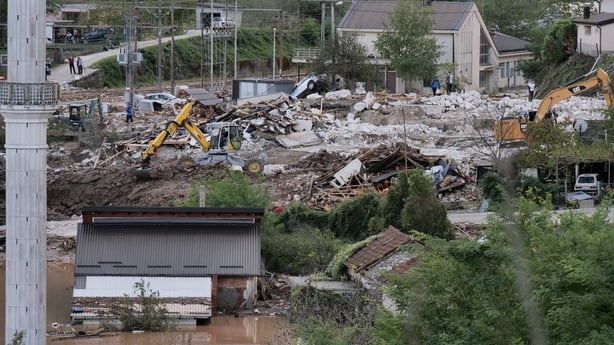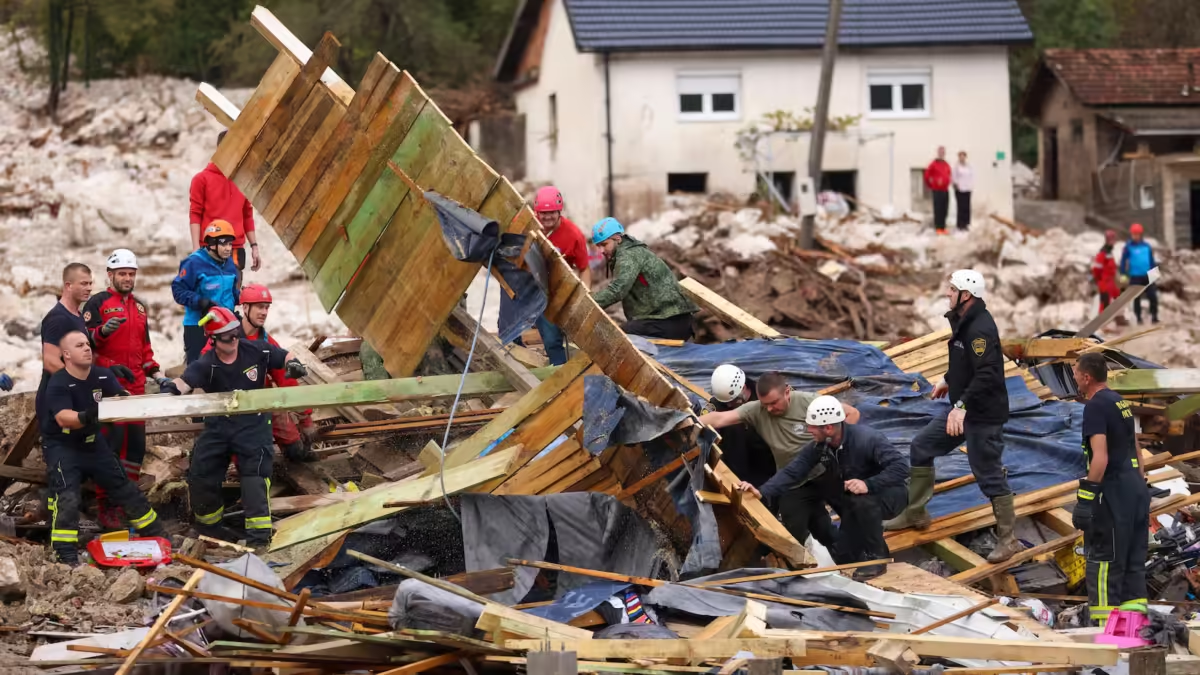Floods and Landslides Leave 16 Dead in Bosnia

Bosnia has been struck by a devastating natural disaster that has left the nation mourning the loss of 16 lives. Floods and landslides, caused by continuous rainfall, have ravaged several regions, leading to catastrophic consequences. This article dives into the causes, timeline, human impact, and the long-term aftermath of this tragic event, along with efforts to prevent future disasters.
Introduction to the Catastrophic Event
Natural disasters often strike without warning, leaving behind destruction, grief, and unanswered questions. Bosnia, a country nestled in the Balkans, is currently reeling from floods and landslides that have claimed the lives of 16 people. In addition to the tragic loss of life, countless individuals have lost their homes, possessions, and peace of mind. The country faces not only a humanitarian crisis but also an environmental and economic one.
Understanding the Causes of Floods and Landslides
Disasters such as this are often the result of a combination of natural factors. But what exactly caused this event in Bosnia?
Climate Change and Extreme Weather Events
The frequency and intensity of extreme weather events, such as heavy rainfall and floods, have been on the rise due to climate change. Global warming causes atmospheric shifts that result in heavier, more prolonged periods of rain, which are a direct trigger for floods. Bosnia, with its varied topography, is particularly vulnerable to such shifts, and climate change plays a significant role in worsening these conditions.
Bosnia’s Geographical Vulnerability
Bosnia’s geography adds to its susceptibility to both floods and landslides. The country’s mountainous terrain and dense forests are beautiful but perilous during heavy rainfall. Steep slopes combined with saturated soils often give way, leading to landslides that bury roads, homes, and even people. Rivers that swell with excessive water overflow, creating widespread flooding in lower-lying regions.
Chronology of the Event
Understanding the timeline of the disaster provides insight into how swiftly the situation escalated.
Timeline of the Disaster
It all began with days of continuous rain that refused to let up. Rivers started to rise, and emergency warnings were issued, but by then, it was too late for many. In a matter of hours, water levels in rivers like the Bosna and Drina reached critical heights, overflowing and inundating towns and villages. The resulting floods caused havoc, and landslides soon followed, further complicating rescue operations.
Affected Areas and Communities

Regions hit hardest by the floods and landslides include northern and central Bosnia. Towns near the Drina River saw entire neighborhoods submerged, while the hilly regions experienced landslides that swallowed homes and roads. Many of the casualties occurred in these areas, where the response teams struggled to reach due to blocked roads and collapsed bridges.
Human Impact of the Disaster
While the statistics highlight the devastation, the human stories behind the numbers are where the real tragedy lies.
Fatalities and Casualties
Sixteen lives were tragically lost in the disaster, with many more injured. Families have been left broken, mourning loved ones lost to the floods or buried in landslides. Rescue teams have pulled survivors from the wreckage, but the emotional scars left behind will take much longer to heal.
Displacement and Destruction of Property
Beyond the human cost, the destruction of property is immense. Thousands of homes have been destroyed or rendered uninhabitable. Families have been displaced, with some seeking shelter in temporary camps. Schools, hospitals, and businesses have also been damaged, creating long-term challenges for the affected communities as they attempt to rebuild.
Rescue and Relief Efforts

In the aftermath of such disasters, the focus quickly shifts to rescue and relief efforts, though the path to recovery is never simple.
Government Response
The Bosnian government, along with local authorities, mobilized rescue teams and the military to assist with evacuation and recovery. Emergency shelters were set up to house the displaced, and efforts were made to clear roads and restore electricity. Despite these efforts, the sheer scale of the disaster has overwhelmed resources, leaving many in need of more immediate help.
International Aid and Support
International organizations, including the Red Cross and United Nations agencies, have stepped in to provide aid. Neighboring countries have also offered support, sending supplies and rescue teams to help alleviate the crisis. The outpouring of international solidarity highlights the global nature of humanitarian assistance in times of need.
Environmental Impact
Natural disasters leave behind not only physical and human damage but also long-term environmental scars.
Damage to Ecosystems
The flooding has damaged Bosnia’s natural ecosystems. Rivers and lakes, now filled with debris and pollutants, pose a threat to local wildlife. The landslides have also disturbed the natural terrain, uprooting trees and destroying natural habitats. This could take years to recover, affecting not only wildlife but also the local communities that depend on these ecosystems.
Long-Term Environmental Consequences
One of the less-discussed consequences of such disasters is the potential long-term impact on the environment. The buildup of waste in rivers could lead to water contamination, which poses health risks to humans and animals alike. Soil erosion from landslides may also degrade arable land, affecting agricultural productivity in the future.
Preventive Measures and Future Preparedness
While natural disasters can’t be entirely avoided, steps can be taken to mitigate their impact and prepare for the future.
Government Initiatives for Flood and Landslide Control
In the wake of this disaster, it’s crucial for the Bosnian government to implement stronger flood and landslide control measures. This includes investing in better drainage systems, reinforcing riverbanks, and establishing early warning systems to alert communities before disaster strikes. Moreover, building regulations need to be updated to ensure that homes are built in safer locations, less prone to floods and landslides.
Community Awareness and Education
Communities must also be educated on how to respond to natural disasters. Conducting drills and educating citizens on evacuation routes and emergency protocols can save lives. Awareness programs that teach people how to recognize the early signs of floods or landslides could also help reduce the number of casualties in future events.
Conclusion
The floods and landslides that left 16 dead in Bosnia have shaken the country to its core. While the immediate focus remains on rescue and relief efforts, it’s essential to look ahead at long-term recovery and preventive measures. Climate change, geographical factors, and a need for better preparedness all contributed to this disaster. Bosnia must now unite in mourning, rebuilding, and preparing for a future where such events may become more frequent.



